News
Schools & The Pandemic: Technology & Mindset Shift
This webinar by ScooNews discussed the most pressing issue of today – use of technology in the education sector
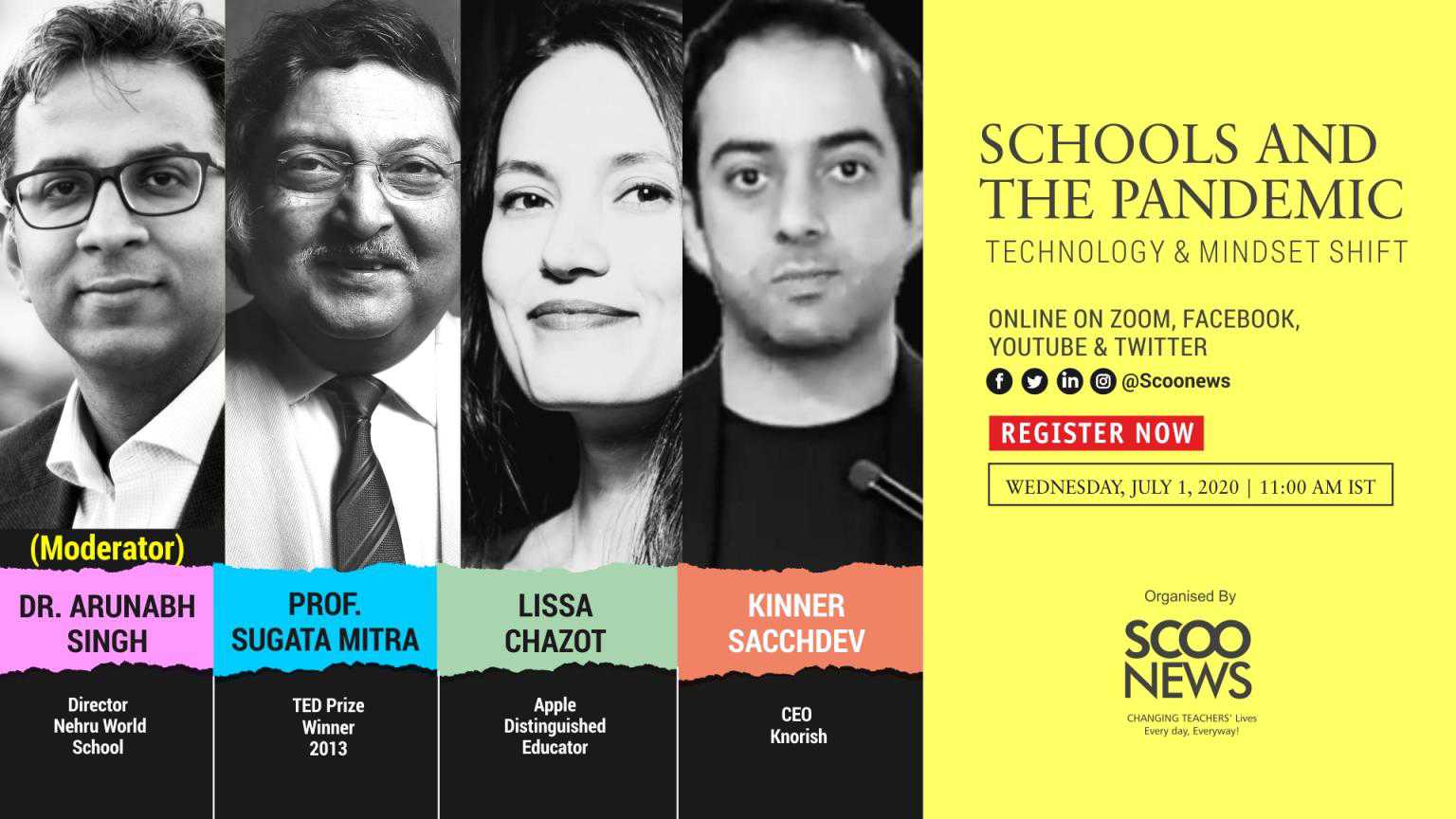
On 1 July 2020, ScooNews hosted a webinar on the topic "Schools and the pandemic: Technology & Mindset Shift,” which was attended by more than 30,000 educationists and parents. The panellists included:
- Dr Arunabh Singh, Director, Nehru World School (Moderator)
- Prof. Sugata Mitra, TED Prize Winner, 2013
- Lissa Chazot, Apple Distinguished Educator
- Kinner N Sacchdev, CEO, Knorish
Excerpts:
When our audience was asked if they believed that technology in the education sector is here to stay or will the education go back to how it was after the pandemic, 82% said that technology is going to be a permanent part of the education sector now.
Technology has been an enabler: How to choose between which tools we need and which ones we want
Lissa Chazot
What is interesting to note is that the needs of yesterday are not the needs of today, because as per the estimates, more than 1.5 billion learners were directly impacted due to the lockdown in about 200 countries across the globe. We need to adapt according to the discourse of current times.
We do not just need to substitute books with devices as that will not be the way to instructional and systemic change we are hoping for.
- Vision is really important: To set out the purpose, WHY, that would help the school to make decisions better for the tools to be used.
- Opt for transversal and polyvalent tools: So the same tool can be used across different classes and can be aligned to different subject competencies.
- Consider students’ situation: It is a huge learning curve for students who are using devices for the first time. While choosing a tool, be considerate of the achievability of the tool, keeping it challenging but doable should be the goal.
- Access and accessibility: We must be mindful of those who don't have internet access. Whereas accessibility would be addressing special-needs students so that no one is left behind while embracing any kind of change.
- Opt for student-centric and interactive tools: This can further the learning and can create meaningful opportunities for teaching.
Change in mindset in regards to assessment: Possibility of making learning more meaningful and lifelong
Sugata Mitra
We generally treat assessment as the last step in the learning process, that is something a learner does not know is ‘taught’ to them and to check how much has the information penetrated they are examined, and because of the lockdown this sequence has been disturbed.
The assumption that teaching has to come first, students’ need to be willing to study and to end with examination cannot work in the current scenario.
I would like to ask, what will happen when I take a few questions from a standard exam and send it to students who are at home, and give them an hour for the answers to be sent back. The general expectation would be that students would look up the answers and send the perfect reply. But, are you extremely sure you would always get back the perfect answer in the given time?
I doubt it. Let us also add another step, before grading the answers, talk to the students individually. This would allow you to check how much the students were able to comprehend the topic.
This is the same method that has been used in PhD for years now. You start with questions neither the student nor the teacher knows the answer to and over the course of time, find the answers together and write a paper. Based on that you are given the degree. Can we bring that method in the schools as well? This could also help with excellent quality assessment outside the school, probably better than inside the school.
Arunabh Singh
Building on that, I am reminded of what my nephew said a few days back. He suggested if everyone in the family could jump up in the air and see who managed to reach the highest length. It was actually an assignment given to him by his teacher who wanted to teach kids about measurements in this unique manner. By carrying out an activity like this, I believe, any child can learn how to measure, which is phenomenal.
Learning in the online space: Completion rate is less than 10% of online courses, is it expected to change?
Kinner N Sacchdev
Massively Open Online Courses (MOOC) were designed by universities to teach at a mass level, but in my opinion, it's the wrong lengths to look at it from.
When we ask what is the completion rate of MOOC, we are looking at it as the mirror to an authentic classroom which is not correct.
I agree with what Prof Mitra said, if the learner is ready and interested, he will look at all the formats for the knowledge. We could easily say the UI & UX design of different platforms are getting better now at completion rates. But we should ask for the sake of educators, how do we identify and make sure that there are all kinds of knowledge on all platforms, and is available to the learners?
Higher completion rates would depend upon students who are avid learners and are interested in learning the topic.
Take my daughter, 3, for example. She loves this particular movie called ‘Ballerina’ and often plays it to practice the dance moves. She’s learning for a film! Now let us go back 20 years when there were no online courses. My daughter would have to wait for the pandemic to end, for me to look for a ballerina class so she could begin to learn. Online platforms bring us these possibilities, without having to wait for every circumstance, to go out of the way to satiate our desire to learn.
Earlier I thought online learning was not something small children can do but she has taught me that if the desire is there to find the answer, put the content in any format in front of people and the completion rates would increase.
Granny Cloud/SOLE Model of teaching: What can be done by educators to continue learning for students?
Sugata Mitra
SOLE aka Self Organised Learning Environment has been here for over a decade now, it has spread in the world and teachers have been using this model to teach, some might have made customised changes, too. But the basic principle is, you ask a question and then you allow a group of students with access to the internet to find a collective answer.
When done in groups, children would love to find the answers as if it is a play, and would not worry about being wrong.
When in rural areas you don't have someone to ask a good question, you can use the Granny Cloud. In Granny Cloud, the experienced educators come in and talk to the children and while doing so, they formulate an interesting question for them.
SOLE is an assessment of a subject that the learner does not know, and sometimes even a teacher might not know. Ask the students the big question, to which no one knows the answer because then the internet won't know, too, and this will be a learning opportunity for the children. It is the upside-down system, examination then learning.
Arunabh Singh
As I listen to Prof Mitra speaking, it resonates with a lot of parenting conversations we are having these days – How do parents engage with their children as learners and how to keep their curiosity and willingness alive.
Online classes: Revolutionising the pedagogy of the classroom with a blend of technology
Lissa Chazot
Embracing change can be a very lonely process, the challenges can feel very daunting. It will help if we create a community of teachers because we are all in this together.
Normally, the change would be accompanied by a strategic plan, professional development, etc., but we were thrown in this with little or no experience at all! You don't have to reinvent the wheel, there are resources out there that you can tap into, like the repository resources curated by the United Nations called ‘Supporting The Continuation Of Teaching And Learning During The COVID Pandemic.’
Technology adoption is a journey, where it starts with substitution. Instead of a textbook, you have online material, the board is replaced by screens and instead of physical presence, there is a camera.
And the last step would be to be able to do things that were not possible without technology, like creating an e-book, learning from movies, doing educational radio shows, etc.
What should be remembered is that there is no one benchmark, there could be ideals which we strive to achieve, but everyone is going to be different and will bring in their individuality and address their needs; basically strive for creativity.
Arunabh Singh
One thing is sure that information is plenty and people across the world are ready to share their resources. Everybody wants to have new ideas and could also be looking for ideas that have worked in another context.
The non-existence of offline tutoring: Platform for educators in India to set up their own academy
Kinner N Sacchdev
Online learning is becoming inevitable now! We need to break it down and understand that there is very little difference between online and offline. India that has always been a land of gurus will be a hotbed for creating content for the world. After all, technology has made content creation so easy in the present times.
When you talk about paying for content in India, we are already paying for tons of content, we just need to realise that not all skills require a physical presence. Some of the most valuable ed-tech companies are based in India now.
We realised that these institutes would really want to build their own websites and platforms and use it for themselves. Being able to make syllabus, online classes, assessments and whatnot, we, at Knorish, wanted to bring the best user experience.
Here are some tips for creating a course and delivering online:
- Find your niche and carefully select what you want to teach online. Also, have a learner’s mindset.
- Learn your devices and technology: These are getting better every day.
- Learn how to get your word out on social media platforms and communicate about your content.
Equity and divide of access: How to weave subjects like music/art into active learning?
Sugata Mitra
Do a search on the topic of incorporating subjects like music and arts into active learning and you will come across people who have written about them, for example, the book I authored called ‘School In The Cloud.’
The right amount of screentime
Sugata Mitra
There is no right and wrong amount of screentime. My grandmother would say the same about books, now it is being said about the devices. It is about the usage of that screentime to learn more.
Kinner N Sacchdev
In every device nowadays, there is a compulsory blue light filter, which has been scientifically found to reduce the strain on the eye.
How to fight Education Ban?
Sugata Mitra
I feel one of the major aspects of this ban could be the fact that not everybody has the accessibility to new-age learning devices or high-speed internet. We need to willingly address this issue.
Lissa Chazot
There are obviously a lot of reservations regarding technology adoption. For schools, it has been found that for the younger years, a blended approach of online and offline works the best.
Kinner N Sacchdev
I would like to say that we need to curate good content for kids because otherwise, these online shows will carry on. It is inevitable since children are locked in homes. It is better to give them knowledgeable content.
Arunabh Singh
This is clearly a block mindset on the part of the government, it was a hasty decision. There has been a hashtag trending #RightToLearn and I would like to tell all the educators to use this hashtag and get your voices heard.
Missed the webinar? Go to our Facebook page (https://www.facebook.com/scoonews/) and watch it now!
Education
AI to Become a Core Subject from Class 3: India’s Big Leap Toward a Future-Ready Generation

In a landmark move to make India’s school system future-ready, the Department of School Education & Literacy (DoSE&L), Ministry of Education, has announced that Artificial Intelligence (AI) and Computational Thinking (CT) will be introduced as part of the school curriculum from Class 3 onwards, beginning in the academic year 2026–27.
The initiative marks a major step in preparing students for an AI-driven world, ensuring early exposure to technological literacy, ethics, and problem-solving. The curriculum, currently being developed through a consultative process with CBSE, NCERT, KVS, NVS, and States/UTs, will fall under the National Curriculum Framework for School Education (NCF-SE) 2023, in alignment with the National Education Policy (NEP) 2020.
A stakeholder consultation held on 29th October 2025 brought together education leaders, including Prof. Karthik Raman from IIT Madras, who heads the CBSE expert committee responsible for shaping the AI & CT curriculum. The focus is on designing a meaningful, inclusive framework that integrates AI not as an advanced elective but as a foundational skill — comparable to literacy and numeracy in importance.
Shri Sanjay Kumar, Secretary, DoSE&L, emphasised that AI education should be viewed as a universal skill closely linked to real-world applications. “Every child’s distinct potential is our priority. Policymakers must define minimum thresholds and evolve them with changing needs,” he said. He also stressed on teacher training as the backbone of successful implementation, with modules under NISHTHA, and resource materials being prepared by NCERT and CBSE.
The Ministry plans to release AI handbooks and digital resources by December 2025, followed by a grade-specific rollout supported by video-based learning materials and structured training.
By embedding AI education from the foundational years, India aims to nurture a generation that understands, creates, and applies technology ethically — transforming the vision of AI for Public Good into everyday classroom reality.
Education
Dharav Utsav to Celebrate Rajasthan’s Cultural Heritage and Local Talent
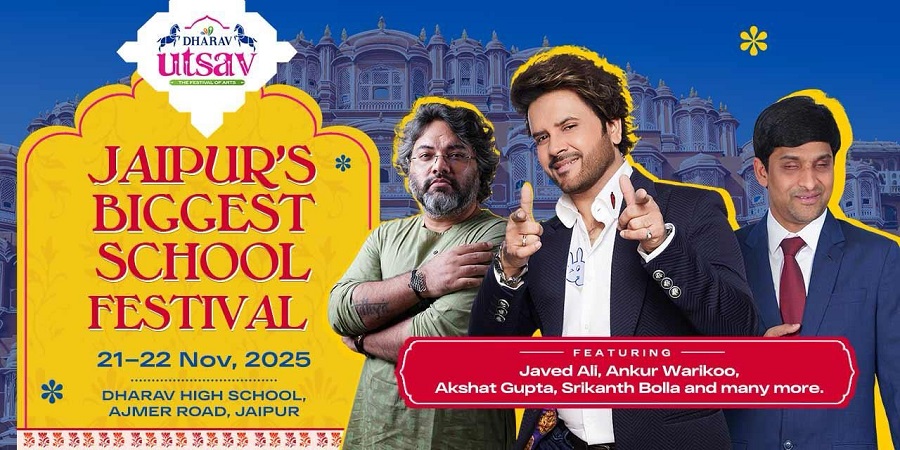
Education
Beyond the Syllabus: School Teachers’ Insights on Project-Based Learning
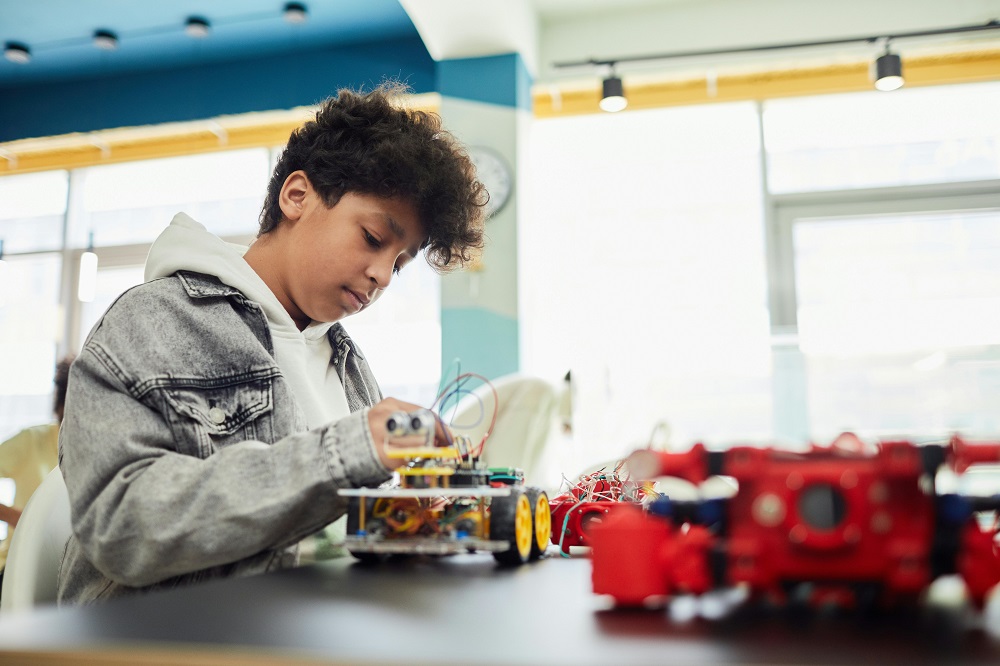
How classroom experiences are being reshaped through projects, inquiry, and authentic learning
As the classroom grows beyond the boundaries of textbooks and blackboards, so too does the role of the teacher, and the very meaning of learning. Project-Based Learning (PBL), once considered a niche innovation, is increasingly being embraced by educators across schools in India. But what happens when PBL moves from theory to practice?
To answer this, we turned to the people at the heart of the learning experience: teachers.
In conversations with educators from diverse school contexts, one theme was clear: PBL is not just a teaching strategy; it’s a transformation in how students learn, engage, and grow.
From Worksheets to Real-World Work: How PBL Differs from Traditional Homework
One of the clearest contrasts teachers observed was how PBL moves learning from repetition to relevance. Traditional homework often reinforces information through rote exercises. PBL, by contrast, asks students to apply their knowledge to solve problems, create products, or investigate issues that matter to them.
One teacher shared how using PBL to raise student awareness about water pollution was a hit in the class. Instead of just assigning problems, the students were made to create awareness posters, conduct surveys in their neighbourhood, and suggest solutions through group presentations. The teacher also noted how the students took the lead, and had an ownership over this project that they usually don’t showcase.
The shift from repetition to application fosters deeper engagement. Several teachers noted that students who previously struggled to stay motivated with homework showed renewed interest when asked to take on real-world challenges.
Changing Roles: Teachers as Facilitators, Not Just Instructors
Project-Based Learning also changes the role of the teacher, who went from being the sole source of knowledge to a guide who supports inquiry and exploration.
One common change teachers noticed was on how they had to let go of control in the classroom. Naturally, the students now had to work on projects on their own, and could only come to the teacher for guidance and help. The teachers noted that they helped their students ask the right questions, find credible sources, and evaluate their work, instead of completely placing the burden of learning on the teacher themselves.
This change isn’t always easy. It requires a shift in mindset and in many cases, rethinking how time is used in class. But most teachers agree: the shift is worth it. PBL has encouraged interdisciplinary approaches, made space for collaborative learning, and created more meaningful student-teacher interactions.
Unlocking Student Potential: What PBL Offers Beyond Academics
Academic performance remains important, but a lot of teachers repeatedly pointed out that PBL nurtures a broader set of skills, like critical thinking, collaboration, communication, and creativity. One teacher particularly noted on how their quietest students became ‘leaders’, and became outspoken when it came to presenting their ideas and projects. While not directly, PBL helped these students find their voices, and find confidence in their effort and abilities.
Students learn to manage time, negotiate roles, and solve problems, skills that aren’t always reflected in exam scores but are vital for life beyond school. For many teachers, the most rewarding aspect of PBL was watching students take initiative, work through failure, and reflect on their learning.
Widening the Circle: Strategies for Scaling PBL in More Classrooms
While the benefits are clear, teachers acknowledged that implementing PBL at a large scale comes with challenges, like limited time, rigid curriculum structures, and unfamiliarity among teachers.
They offered a few practical suggestions for schools and educators considering wider adoption:
- Start Small and Build Confidence: Starting with short projects aligned to the unit you are already teaching introduces PBL in an easy manner. This way, teachers do not have to worry about overhauling their curriculum, or for making huge changes to their current teaching methods.
- Encourage Collaboration Among Teachers: Joint planning across subjects makes projects richer and more integrated. This also promotes interdisciplinary skills among students, and allows them to craft solutions using different subjects and skillsets.
- Make Time for Reflection: Embedding opportunities for students to present, critique, and reflect helps solidify learning. By reflecting on their projects and mistakes, they can understand how they can improve their approach to PBL.
- Support Professional Development: Teachers emphasized the need for ongoing training, not just one-off workshops but long-term spaces for peer sharing and mentorship. This continuous development would cement and solidify the methods and outcomes that will maximise using PBL for student benefits
Looking Ahead: Redefining Success in Education
PBL challenges traditional ideas of what learning looks like. It pushes students to move beyond memorization, and it challenges teachers to rethink their methods. But more than anything, it opens up the classroom to ideas, to communities, and to possibilities. No longer are students just preparing for exams, but also for the complex world outside school.
As educators continue to navigate the changing landscape of education, the insights from teachers point us toward a hopeful future, where learning is meaningful, relevant, and rooted in real-world experience.
This article is authored by Mrs. Padmashini M Patro, Principal, Air Force School Bamrauli
Education
Over 1 Lakh Single-Teacher Schools Educate 33 Lakh Students Across India: MoE Data

Education
Over 3 Lakh Schools Join Hands for India’s Largest-Ever Innovation Challenge: Viksit Bharat Buildathon 2025

In a historic moment for Indian education, more than 3 lakh schools across the country came together to participate in the Viksit Bharat Buildathon (VBB) 2025, the largest live school innovation challenge ever organised in India. The nationwide event was inaugurated in New Delhi by Union Education Minister Dharmendra Pradhan, marking a significant milestone in the Government’s efforts to embed creativity, innovation, and problem-solving into the school ecosystem.
The Viksit Bharat Buildathon, organised by the Department of School Education & Literacy (DoSEL) in collaboration with Atal Innovation Mission (AIM), NITI Aayog, and AICTE, saw over one crore students from Classes 6 to 12 working simultaneously during a 120-minute live innovation session. Students teamed up in groups of three to five to design prototypes and propose solutions under four themes — Atmanirbhar Bharat, Swadeshi, Vocal for Local, and Samriddhi.
While inaugurating the event, Minister Pradhan interacted virtually with students of PM SHRI Government High School, Khorda, Odisha, and later visited Delhi Public School, Mathura Road, and Kendriya Vidyalaya No. 2, Delhi Cantt. Commending students for their creativity, he said, “The vision of Viksit Bharat will be realised through the innovative spirit of our young learners. These ideas will not only address domestic challenges but also create global models for change.”
The event drew widespread participation, with Uttar Pradesh leading the numbers (78,206 schools), followed by Maharashtra (41,198), Gujarat (20,017), and Madhya Pradesh (18,129). Other states like Tamil Nadu (16,370), Bihar (15,732), Odisha (12,344), and Haryana (11,567) also recorded impressive engagement, showing the growing momentum for grassroots innovation across regions. Even smaller territories like Ladakh (358), Puducherry (149), and Andaman & Nicobar Islands (171) participated actively, reflecting the nationwide reach of the initiative.
According to Sanjay Kumar, Secretary, DoSEL, this unprecedented participation signals a transformation in how Indian students approach learning. “This one-of-a-kind movement strengthens innovative thinking and enhances the problem-solving capabilities of students across India,” he said. Deepak Bagla, Mission Director of AIM, called the initiative a “mass movement connecting schools in remote villages with those in metropolitan cities through innovation.”
A New Chapter for Indian Education
The Viksit Bharat Buildathon signifies more than just a hackathon — it reflects a systemic shift in Indian education towards experiential and innovation-led learning. As schools across the country engage in design thinking, tinkering, and collaboration, students are being equipped not just with knowledge, but with the mindset and skills needed to build a self-reliant India.
By nurturing creativity from an early age and fostering partnerships between schools, government bodies, and industry, the Buildathon is shaping a generation ready to contribute to the vision of Viksit Bharat 2047 — a developed, empowered, and innovation-driven India.
Education
17-year-old Innovator Designs Learning Tools for the Visually Impaired
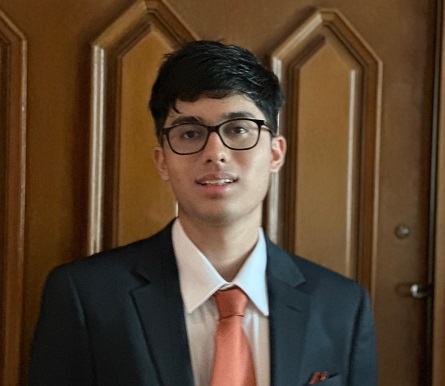
At just 17, Singapore-based student Ameya Meattle is proving that age is no barrier to impact. What began as a small idea to make education more accessible has evolved into a mission that is transforming how visually impaired learners experience learning and skill development.
Ameya founded Earth First at the age of 14 — a social enterprise that helps visually impaired individuals “earn and learn” by creating sustainable, eco-friendly products. Working with eight NGOs across India and Singapore, the initiative has trained more than 100 visually impaired students and launched over 23 sustainable product lines, from tote bags and jute placemats to macramé planters. Each design is adapted to provide hands-on learning opportunities and help trainees gain confidence in both craft and enterprise.
Beyond social entrepreneurship, Ameya has focused deeply on education and technology. He led a Python programming course for 50 visually impaired students, designing custom training modules that made coding accessible through screen readers and tactile tools. By introducing technology as a viable career pathway, Ameya hopes to help students move from manual tasks to high-skill, digital opportunities.
His work also extends into assistive technology research. Under the mentorship of Dr. Pawan Sinha at MIT, Ameya developed a VR-based diagnostic game to assess visual acuity in children — turning the process into an interactive experience rather than a clinical test. The tool is being piloted at MIT’s Sinha Lab and with Project Prakash in India, helping doctors evaluate and track visual development before and after eye surgeries.
In addition, during his internship at the Assistech Lab at IIT Delhi, Ameya worked on designing tactile STEM teaching aids, such as accessible periodic tables and coding tutorials for visually impaired learners. His goal, he says, is not just to innovate but to make scientific learning inclusive and joyful for all.
Ameya’s work highlights how education, empathy, and innovation can intersect to create a more equitable future — one where technology serves not just progress, but people.
Education
Ministry of Education Urges Schools to Adopt UPI for Digital Fee Payments, Promoting Ease of Schooling

Education
Supreme Court Calls for Early Sex Education in Schools: “Not from Class IX, But from a Younger Age”
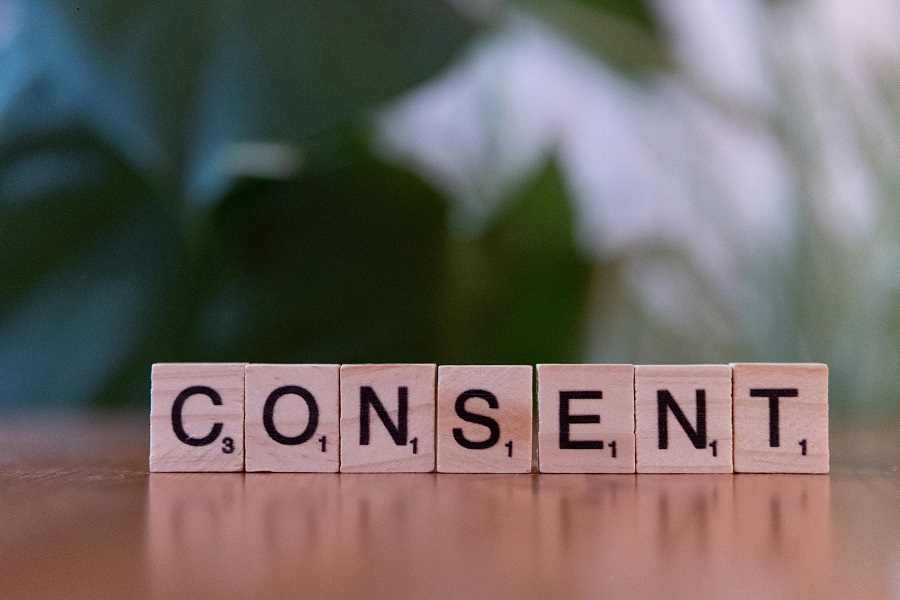
In a landmark observation, the Supreme Court of India has emphasised the urgent need to introduce sex education at a younger age, rather than waiting until Class IX as is the current norm. The apex court stated that children should be informed and sensitised about the physical and emotional changes that accompany puberty — and taught the necessary care and caution that come with it.
The observation came from a Bench comprising Justice Sanjay Kumar and Justice Alok Aradhe, which noted that the absence of early sex education leaves children vulnerable to misinformation and misunderstanding during their formative years.
“Sex education should be provided to children from a younger age and not Class IX onwards. It is for the authorities concerned to apply their mind and take corrective measures so that children are informed of the changes that happen after puberty,” the court stated.
The Bench made the remarks while hearing an appeal filed by a 15-year-old boy, who had been denied bail by the Allahabad High Court in a case under Sections 376 and 506 of the Indian Penal Code (IPC) and Section 6 of the Protection of Children from Sexual Offences (POCSO) Act. Recognising that the accused was himself a minor, the Supreme Court had earlier granted him bail in September 2025.
In the same case, the Court had directed the Government of Uttar Pradesh to submit an affidavit explaining how sex education is currently implemented in schools. The state responded that sex education is introduced only in Classes IX to XII, following NCERT guidelines. However, the Bench expressed concern over this delayed introduction and urged policymakers to revisit the framework to ensure children receive age-appropriate education much earlier.
The Court set aside the High Court’s order and made the juvenile’s bail permanent until the completion of the trial. More importantly, its remarks have reignited the national debate on the need for comprehensive sexuality education in India, which many experts argue is crucial to preventing abuse, reducing stigma, and promoting healthy development among adolescents.
Education experts have long maintained that early, factual, and inclusive discussions about puberty, consent, and emotional health must begin before adolescence — ideally in primary school — to prepare children for real-world experiences and relationships. The Supreme Court’s observation is expected to prompt renewed policy discussions on revising the sex education curriculum nationwide.
Education
Delhi Government Launches Online First Aid Training Programme for Teachers
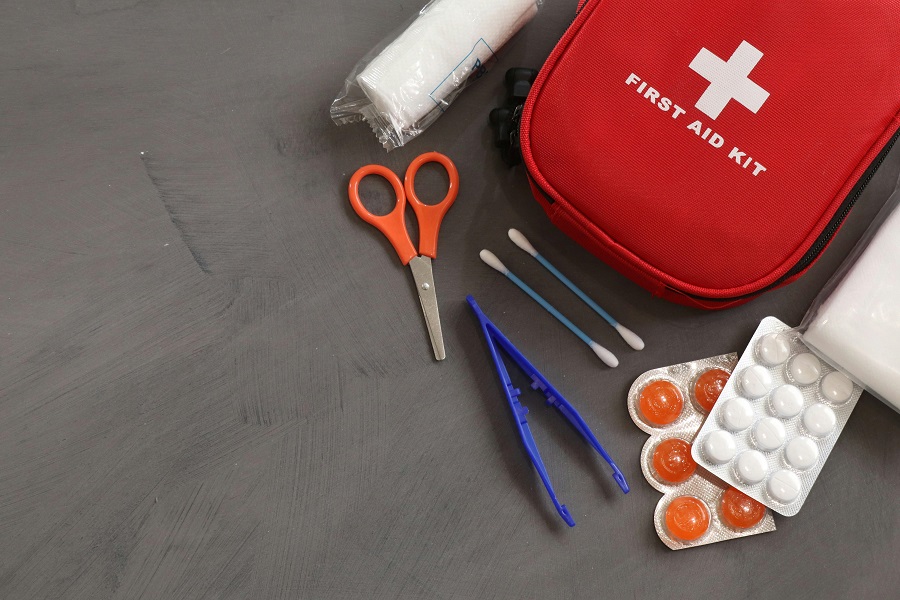
The Delhi government has introduced a new online training programme designed to equip teachers with essential first aid skills to respond effectively during health emergencies in schools.
According to a circular issued by the State Council of Educational Research and Training (SCERT), the course — titled “First Aid – To Improve Human Reaction in Challenging Health Situations” — will be conducted under the Massive Open Online Course (MOOC) format. The training is mandatory for all teachers and will run from October 9 to October 19, 2025.
The initiative aims to increase awareness about the importance of readiness in medical emergencies and the role of first aid in saving lives. It will also educate teachers on maintaining functional first aid kits in classrooms and demonstrate practical methods for administering care in real-life situations.
Teachers must achieve at least 70 per cent in each assessment to complete the course successfully. Upon completion, participants will receive certificates, which can be downloaded directly from the platform.
By introducing this online training, the Delhi government seeks to build a culture of preparedness and safety across schools. With thousands of teachers gaining basic emergency response skills, the initiative is expected to significantly improve the ability of schools to manage sudden health crises and ensure student well-being.
Education
Atal Innovation Mission and IFCCI Join Hands to Scale Up Atal Tinkering Labs Across India

The Atal Innovation Mission (AIM), NITI Aayog, and the Indo-French Chamber of Commerce & Industry (IFCCI) have signed a Statement of Intent (SoI) to strengthen and expand the Atal Tinkering Labs (ATLs) network across India. The agreement, formalised at the French Embassy in New Delhi during IFCCI’s 3rd CSR Connect Day 2025, marks a significant step in fostering STEM education, digital literacy, and innovation among school students.
The event was attended by H.E. Thierry Mathou, Ambassador of France to India, who praised the partnership for deepening Indo-French collaboration in social development. He highlighted that 2026 will mark the India–France Year of Innovation, encouraging businesses from both nations to invest in sustainable, community-driven impact initiatives through Corporate Social Responsibility (CSR).
Through this partnership, IFCCI and AIM aim to mobilise CSR contributions from French and Indian companies to improve infrastructure, enhance hands-on learning experiences, and bridge the gap between industry and education. IFCCI, which has already executed over 86 CSR projects benefiting more than 15,000 people across India, will leverage its network to support ATL expansion, particularly in underserved schools.
Mission Director of AIM, Deepak Bagla, noted that over 11 million students have already benefitted from the ATL initiative, which he called “one of the world’s largest grassroots innovation programs.” He said, “From the northernmost village school to the southernmost, innovation is thriving everywhere. The real story lies not in the scale, but in the creativity of the ideas students are building.”
A Shared Vision for Inclusive Innovation
The collaboration aims to make innovation accessible to all students by promoting digital tools, teacher training, and student challenges that inspire curiosity and problem-solving. IFCCI Director General Payal S. Kanwar added, “This partnership is a step forward in empowering youth with 21st-century skills. We aim to bridge the gap between industry and education and make innovation accessible to every student, especially in underserved regions.”
However, as the Atal Tinkering Labs expand, addressing operational challenges remains crucial. Reports by UNICEF and The New Indian Express underscore that access to digital tools alone cannot guarantee innovation without inclusive design, mentorship, and ethical technology use. UNICEF’s SPARK Labs model, which links creativity with social change, offers a useful reference — encouraging schools to blend innovation with empathy, inclusion, and purpose.
Challenges and Areas for Improvement
Despite the ATL program’s remarkable reach, a 2023 assessment highlighted several gaps. Nearly 58% of ATL teachers lack a STEM background or structured training, resulting in inconsistent mentorship. In many schools, ATL sessions are not integrated into the timetable, limiting daily engagement. Moreover, less than 10% of schools report active student participation due to limited guidance and parental scepticism about its academic value.
Operational hurdles like irregular funding, defective equipment, and poor monitoring systems have also hindered consistent performance. Some schools struggle to maintain labs once initial grants are exhausted, while others lack a mechanism to track outcomes effectively.
The Way Forward
For the AIM–IFCCI partnership to achieve its full potential, a few key steps can strengthen impact:
-
Teacher Capacity Building: Introduce regular certification-based training programs, preferably in collaboration with universities and tech firms.
-
Curriculum Integration: Embed ATL projects within school timetables and link them with existing subjects like science and mathematics.
-
Mentorship Networks: Connect schools with local innovators, start-ups, and CSR professionals for year-round engagement.
-
Monitoring Systems: Deploy digital dashboards to track participation, tool usage, and project outcomes for better transparency.
-
Community Awareness: Conduct parent and community outreach sessions to showcase how tinkering enhances academic learning and future employability.
If executed effectively, this Indo-French collaboration can redefine India’s innovation ecosystem by turning every school into a space where curiosity meets creation. The challenge now lies in ensuring that every student, regardless of background, not only has access to a lab but also the guidance and confidence to build something meaningful within it.
-
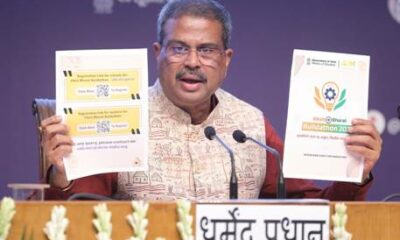
 Education3 months ago
Education3 months agoMinistry of Education launches Viksit Bharat Buildathon 2025 to Ignite Innovation among School Students
-
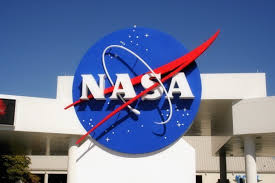
 Education3 months ago
Education3 months agoMaharashtra Education Department Plans Students’ Tour to NASA
-
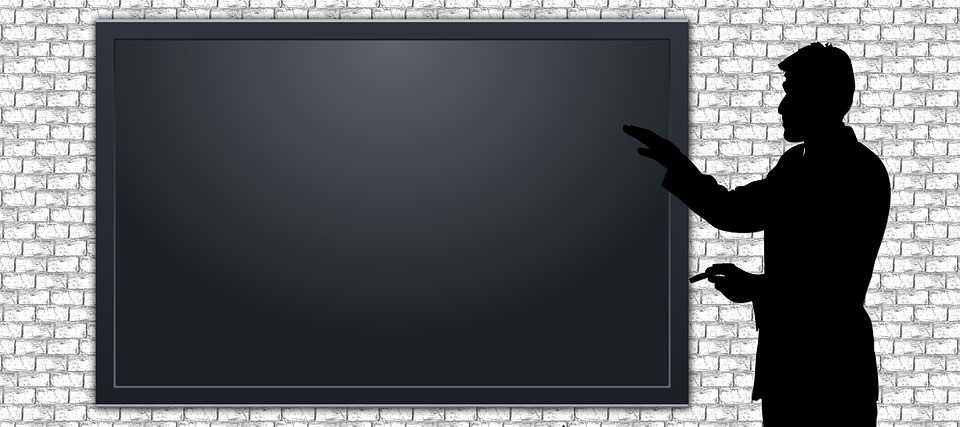
 Education3 months ago
Education3 months agoGovernment Plans to Introduce Skill-Based Learning in Class 11 and 12 Curriculum
-
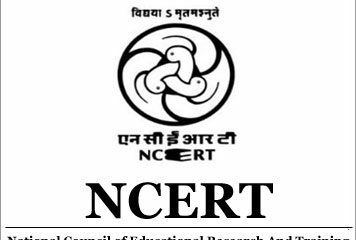
 Education3 months ago
Education3 months agoNCERT to Grant Equivalence to Class 10 and 12 Certificates Across Boards for Admissions and Jobs
-
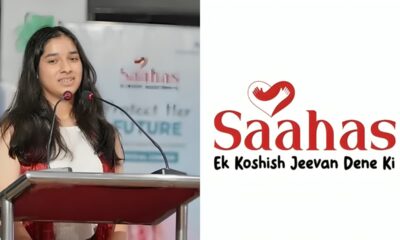
 Education3 months ago
Education3 months agoClass 11 Student Navya Mrig on a Mission to Bust Myths About Organ Donation
-
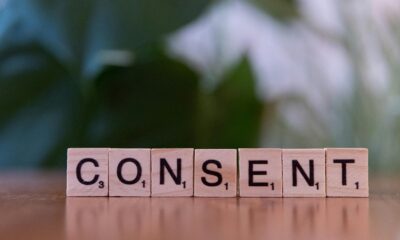
 Education3 months ago
Education3 months agoSupreme Court Calls for Early Sex Education in Schools: “Not from Class IX, But from a Younger Age”
-
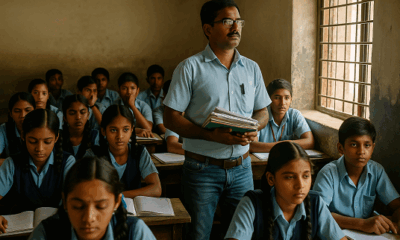
 Education3 months ago
Education3 months agoIndia Loves its Teachers, Just Not Enough to Pay Them: India Today Reports
-

 Education3 months ago
Education3 months agoAtal Innovation Mission and IFCCI Join Hands to Scale Up Atal Tinkering Labs Across India
-
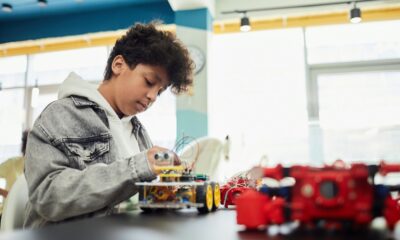
 Education2 months ago
Education2 months agoBeyond the Syllabus: School Teachers’ Insights on Project-Based Learning
-

 Education3 months ago
Education3 months agoDelhi Government Launches Online First Aid Training Programme for Teachers




























































